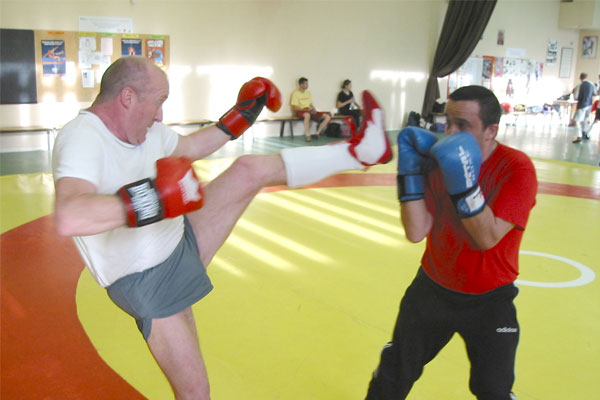Martial Arts Near Me
Savate
Originating from France, savate is a compelling and distinct martial art that combines a blend of Western boxing and kicking techniques. With a rich history dating back to the 19th century, savate has evolved into a unique combat sport that highlights elegance, finesse, and superb footwork. In this article, we will delve into the fascinating history of savate, explore its fundamental techniques, and examine its current status in the world of combat sports.
The history of savate can be traced back to the streets of 19th century France, where it emerged as a practical form of self-defense for the lower classes. Initially called "savage," this martial art emphasized the use of the fists and feet to neutralize opponents. However, it was not until the early 1800s that savate began to formalize into a codified system under the guidance of former street fighter Charles Lecour.
Lecour, who was influenced by English boxing techniques, introduced regulations that separated savate from its brawling roots. These rules included prohibiting strikes to the face with bare knuckles and introducing the use of specialized footwear that allowed for more powerful kicks. Simultaneously, attention was placed on developing precise footwork, which became a hallmark of the art.

As savate gained popularity, it was incorporated into military training in France, further solidifying its status as a respected martial art. The inclusion of savate in military training programs helped refine its techniques and establish a more structured curriculum. Moreover, it sparked interest among civilian practitioners who sought to learn self-defense while honing their physical prowess.
The techniques employed in savate encompass a unique fusion of strikes derived from boxing and kicks inspired by traditional French footwear. The footwork, known as "chassé," distinguishes savate from other martial arts, as it emphasizes agility, balance, and quick movement. The chassé allows savateurs (savate practitioners) to employ intricate combinations and evade incoming attacks effectively.
A well-rounded savate fighter must possess a variety of strikes and kicks in their arsenal. The "fouetté," or whip kick, is a prominent technique where the hip is hinged to deliver powerful kicks with the ball of the foot. This technique allows savateurs to strike effectively with both range and precision. Furthermore, the "chassé bas" or low kick targets the opponent's legs, disrupting their balance and mobility.
In addition to kicks, savate incorporates hand strikes borrowed from boxing. The use of fists emphasizes speed and precision, with focus placed on combinations such as the jab, cross, hook, and uppercut. Combining these techniques, savateurs are able to attack their opponents from various angles, making it challenging to anticipate their moves.
Today, savate has garnered international recognition and is well-regarded as an organized sport. The International Savate Federation (FISav) was established to oversee the development and promotion of the sport globally. Savate competitions follow intricate rules that categorize fighters based on their weight classes and skill levels. Participants compete in both amateur and professional bouts, showcasing their proficiency in the art.
Savate's cultivation as a sport has not overshadowed its practicality in self-defense scenarios. Due to its emphasis on quick footwork, precise striking, and evasive maneuvers, savate remains an effective martial art for personal protection. Various self-defense programs have incorporated savate techniques to teach individuals how to protect themselves in real-life situations.
In recent years, savate has received increased attention worldwide, attracting enthusiasts and practitioners from diverse backgrounds. The elegance, agility, and effectiveness of savate techniques have captivated martial arts enthusiasts, seeking to explore a distinct combat style beyond traditional forms. Savate's unique blend of Western boxing and dynamic kicking has elevated it to a revered position in the realm of martial arts.
Savate offers a harmonious synthesis of boxing and kicking techniques, coupled with exquisite footwork, making it a remarkable and highly respected martial art. Its history, deeply rooted in the streets of 19th century France, has since evolved into an art form that combines grace with power. Whether practiced for self-defense or as a competitive sport, savate continues to captivate individuals worldwide. With its versatility and distinctiveness, savate holds a significant place in the world of combat sports.